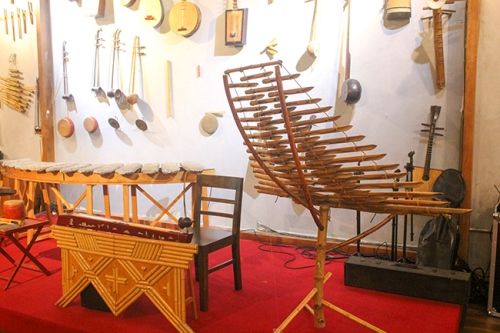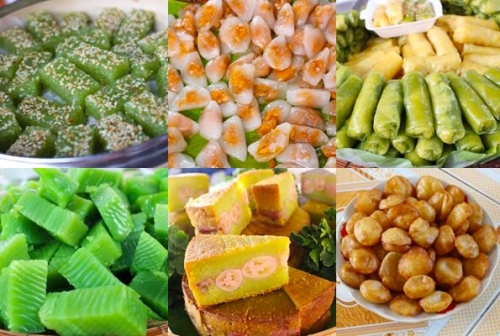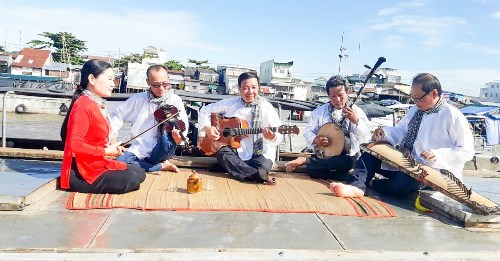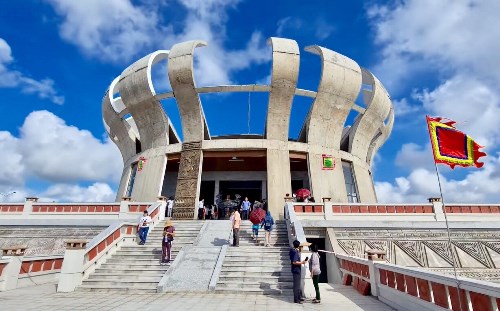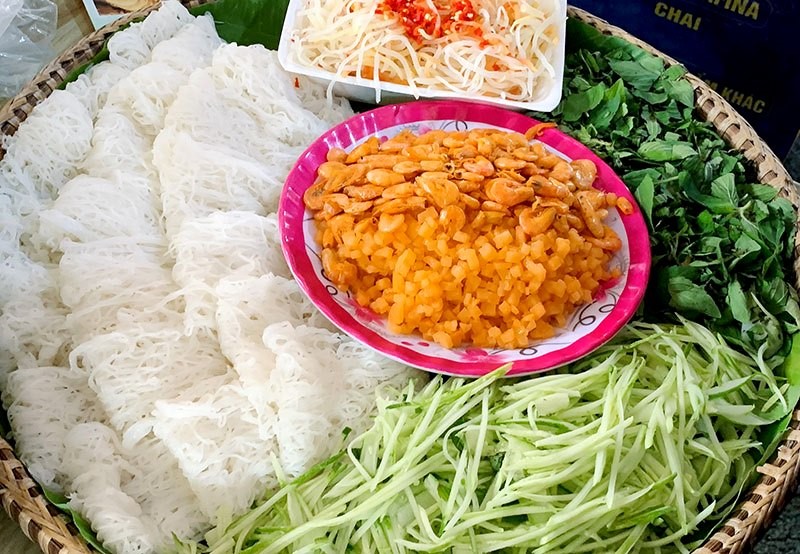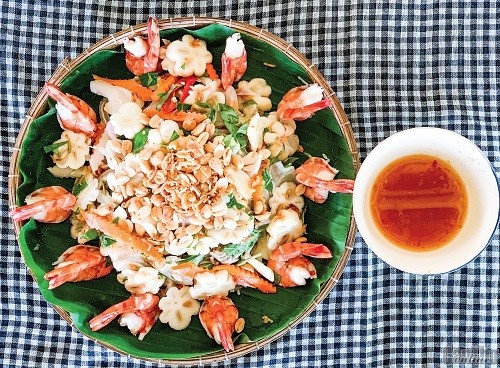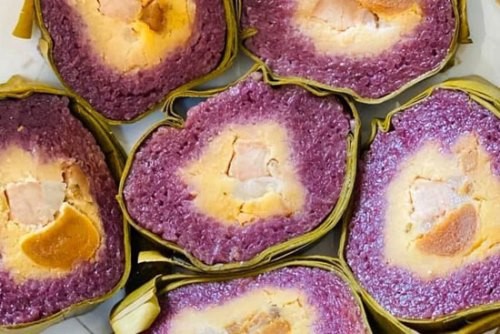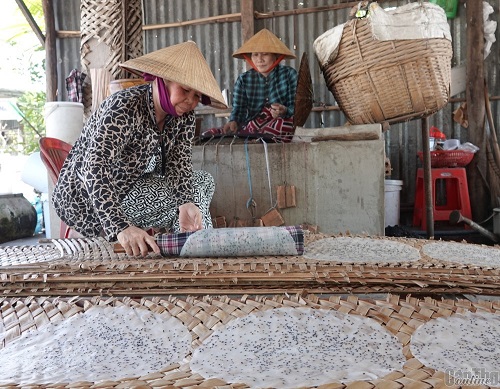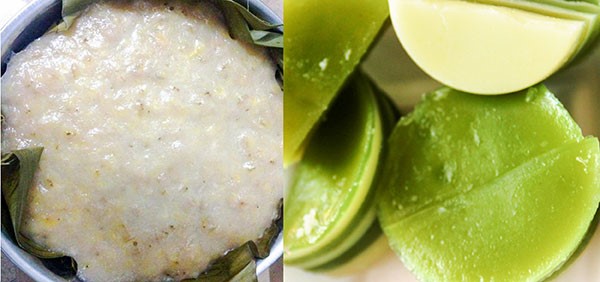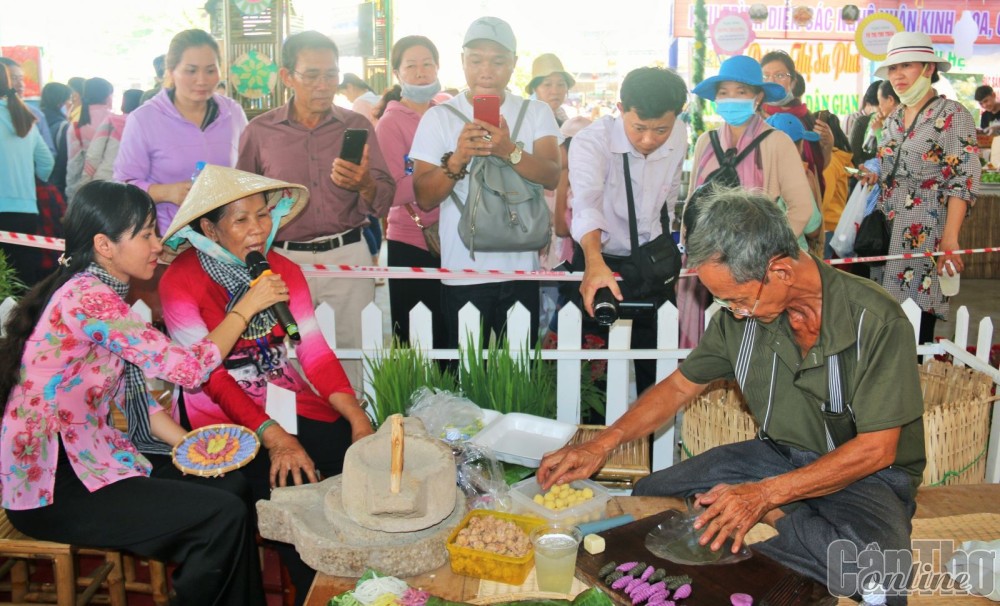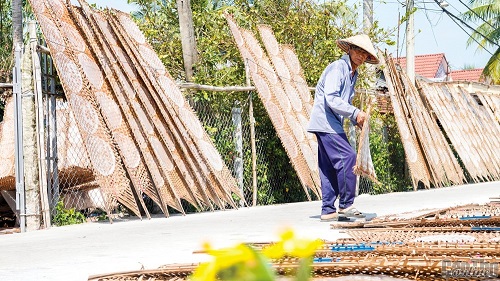
The culture of the Western Capital
According to the statistics from the Department of Culture, Sports, and Tourism (DCST) of Can Tho City, there are currently 38 ranked cultural and historical relics, including 14 national-level relics and 24 city-level relics. Additionally, there is one religious cultural structure, the Hung Kings’ Temple in Can Tho City (Binh Thuy District), and one commemorative cultural structure, the Chau Van Liem Temple (Thoi Lai District). The intangible cultural heritages in Can Tho City, listed in the category of national-level intangible cultural heritage, include the Cai Rang Floating Market Culture, Ky Yen Festival at Binh Thuy Communal House, Ho Singing of Can Tho, Lullaby Singing of the Vietnamese people in Can Tho, and the Craft of Making Rice Paper in Thuan Hung. Alongside 20 other provinces and cities in the South, Can Tho City is preserving and practicing the art of Don Ca Tai Tu of the Southern Region, which has been recognized by UNESCO as an intangible cultural heritage representative of humanity. The entire city has a total of 116 types of recorded intangible cultural heritage.
Most of the cultural relics and structures are managed at different administrative levels. Can Tho City Museum directly manages the national-level relic of Kham Lon Can Tho Prison (Ninh Kieu District), while the Can Tho City Police manage the city-level relic of Le Binh Battle (Cai Rang District). The remaining ranked relics are managed by their respective districts. Five out of nine districts have established Relic Management Boards, including Ninh Kieu, Binh Thuy, Cai Rang, Thot Not, and Phong Dien. Some districts have trained tour guides who serve at the relics regularly, including Ninh Kieu, Thot Not, Binh Thuy, Cai Rang, Phong Dien, Thoi Lai, and Co Do. Most of the ranked relics have received investment for construction. From 2016 to 2022, 26 out of 38 relics were renovated, with a total budget of over 160.5 billion VND. The funding sources include 2.7 billion VND from the National Target Program for Culture, nearly 135 billion VND from the state budget, and over 23.2 billion VND from socialization sources.
Mr. Nguyen Minh Tuan, Director of the DCST, stated that the city museum has implemented 19 conservation and promotion projects for various types of intangible cultural heritage. As a result, intangible cultural heritage elements such as traditional ceremonies of the Khmer people, traditional music of the Chinese community, festivals, and cultural activities have been recognized, appropriately preserved, and promoted.
Status of promotion
The current situation of cultural preservation reveals three trends: good preservation of heritage, but unable to exploit its economic value; good exploitation of economic value, but inadequate preservation of heritage; harmony between heritage preservation and socioeconomic development. In the case of Can Tho City, it can be assessed that the city is following the first trend. Mr. Nguyen Khanh Tung, Director of the Institute of Economics - Society of Can Tho City, evaluates: The city has a strong interest in preserving cultural heritage through research, collection; preservation, conservation of artifacts, exhibition, and the organization of festivals... However, some activities have not been effectively linked to tourism development.
In reality, the progress of digitalizing cultural heritage in Can Tho is quite slow. Many localities across the country are implementing online exhibitions, 3D displays, digitalization of artifacts, etc. However, Can Tho is relatively quiet in this regard. Over four years ago, Can Tho City Museum took the lead in implementing the scientific topic "Application of information technology in the management and promotion of Can Tho City Museum". But up until now, the museum's website is still quite simple, with little content and infrequent updates. Director of the Department of Culture, Sports, and Tourism, Nguyen Minh Tuan, stated that the department has drafted a plan for the city's People's Committee to implement the cultural heritage digitalization program for Can Tho City in the 2023-2030 period. Currently, they are gathering opinions and plan to submit it to the People's Committee for approval in June 2023.
Many relics in Can Tho are lacking or don't have people in charge of providing explanations at the site. The collection of artifacts displayed in the relics is also not diverse enough, with many relics only having a few artifacts while the majority are just images. Using heritage for tourism must be a smooth and continuous process - "culture in tourism" and "cultural tourism". However, heritage tourism in Can Tho has not achieved this. From a cultural perspective, Mr. Nguyen Thanh Thuan, Vice Chairman of the Dong Thap Province Historical Science Association, believes that "not every relic is suitable for tourism. When developing a relic for tourism, it is necessary to conduct specific research on each type of relic, such as architectural art, history, revolution, folk beliefs, etc. to clearly identify which ones should be prioritized for conservation and which ones can be invested in for tourism development".
The story of preserving and promoting the cultural heritage of Cai Rang Floating Market

Cai Rang floating market attracts a high number of tourists, but there are still many problems to be solved in preservation and development.
In 2016, the Cultural of Cai Rang Floating Market was included in the list of intangible national cultural heritages by the Ministry of Culture, Sports, and Tourism. The People's Committee of Can Tho City assigned the People's Committee of Cai Rang District to lead and coordinate with relevant agencies to implement the project "Preservation and Development of Cai Rang Floating Market". However, over time, there have been some shortcomings with the implementation of this project. The focus seems to be more on the tangible aspects rather than intangible cultural values - the main factors that contribute to the cultural significance. For example, the preservation of normal daily activities, spiritual life, and folk culture of market-goers.
Mr. Nguyen Khanh Tung emphasized: "The most difficult thing is to prioritize the interests of market-goers. Without them, there would be no floating market." A deep survey is needed to understand the current situation and practical needs of market-goers, as well as the factors that affect their lives. The goal is to preserve cultural activities of above the dock and under the boats, as well as the culture of trading on the river and the culture of floating market. It is essential to restore the cultural elements of the floating market, such as traditional Don ca tai tu, the calls of vendors, the singing exchanges on the river, knowledge about different types of boats for interaction and cultural discussions with visitors. The reenactment must be true to its original nature while blending in with the context of the present-day floating market.
Mr. Nguyen Khanh Tung also pointed out 6 "shortcomings" of state management in the preservation and promotion of the floating market. Firstly, the assignment of tasks to departments, sectors, and localities is not yet well-coordinated. Currently, there is no state management agency responsible for overseeing the transportation and passengers from the departure point to the floating market and vice versa. Secondly, there is no proper central operating center at Ninh Kieu Wharf (similar to managing bus stations), so businesses and boat owners set up ticket booths scattered throughout the Ninh Kieu Wharf area, which leads to aggressive solicitation and passenger grabbing. Thirdly, some state interventions have not been effectively serving the development of Cai Rang Floating Market. In addition, the practice of "commission sharing" (agreements between sellers, vendors, tour guides) in the provision of services results in inflated product prices and reduces the value of services for tourists. Fourthly, insufficient attention has been given to the conservation of the cultural aspects of the floating market in recent times. Fifthly, the investment in infrastructure (water, land, piers, etc.) to support tourism development is limited and does not meet the requirements. The research and development of products and services related to Cai Rang Floating Market have not received sufficient attention. Finally, there has been a lack of major investors participating in the preservation and development of Cai Rang Floating Market.
* * *
The preservation and promotion of cultural values, combined with tourism development, is a direction that our Party and State have determined in many major policies and strategies. Investing resources in this work will lead to the development of infrastructure, products, and services, increase market flows, and contribute to the overall development of the locality.
By addressing the interrelationship between heritage preservation, traditional education, and tourism development, Can Tho aims to become an ecological, civilized, and modern city that embraces the cultural essence of its rivers. It aspires to be the center of the Mekong Delta region in terms of services, commerce, and tourism, as stated in the Mekong Delta Regional Planning for the period 2021-2030, with a vision until 2050 that has been approved by the Government.
Source: Can Tho News - Translated by Hoang Dat





